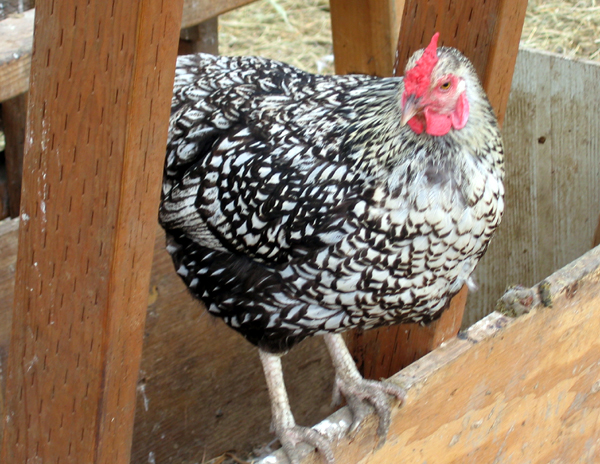
primary-image, l
(post, Kathleen Bauer)

primary-image, l
Chrissie and Koorosh Zaerpoor have been thoughtful stewards on so many levels: farmers, landowners, parents, educators, cheesemakers and community members. This year brings much change to Kookoolan Farms, including a move away from regular participation in the Hillsdale Farmers' Market in order to focus on their farm store in Yamhill, where they will offer cheese classes and sell cheesemaking supplies, eggs and a nascent CSA. It also gives an opportunity to develop a more natural, comprehensive system for raising poultry meats, which Chrissie reflects on here. There has been substantial media focus on the rapidly-reducing number of species and varieties of foods available to humans. A huge amount of our own species' calories comes from just corn, soy, wheat and rice. Within these plant species, genetically modified varieties exist for all four, and a number of natural and heirloom varieties suited to particular climates, resistant to particular diseases and possessing certain characteristics that were valued by the people who selected them (such as flavor, color, and nutrition) are either lost or threatened. It is the same for livestock breeds. Modern domestic breeds of cows, pigs, chickens and turkeys are bred for rapid growth and docile temperament. Older breeds that had been selected for high butterfat, good mothering skills, excellent taste, hardiness in certain climates and strong immune systems are rapidly going extinct. Nearly all of the chickens that we raised in 2008 were Cornish Cross chickens. These are the same broad-breasted chickens that are raised by virtually everyone in America; exact statistics are hard to come by, but well over 90% of all American chickens are Cornish Cross. By the early 1950s, more than two-thirds of all commercial chickens in the United States carried the bloodlines of the winners of the "Chicken of Tomorrow" breeding contests of 1948 and 1951. (Watch this amazing video about the contest - KAB) The poultry breeder who placed second in the contest developed the hybrid chicken: female and male breeders are bred separately for different characteristics, and then bred together for egg and chick production in confinement factories. The hybridization ensures that second-generation chicks will not produce good meat chickens, guaranteeing buyers for the hybrid chicks just as sterile seeds from Monsanto guarantees seed buyers. Commercial broiler chickens today grow to twice the finished weight in less than half the time and on less than half the feed, compared to chickens available in 1935. Summarized another way: prior to the hybridization and industrialization of the poultry industry that began around 1935, the natural growth pattern of a meat chicken was a 16-week growth period to a finished carcass weight of less than three pounds. Rapid growth in modern chickens has come at the expense of the birds' immune systems, resulting in weaker legs, more heart attacks, green muscle disease and the need for antibiotics and medications to prevent large-scale outbreaks. Koorosh and I are having ethical struggles with nearly every aspect of what we've outlined here. The delicious irony is that preserving these heirloom animal breeds requires both raising them and creating a market that demands these meats. Older breeds of chickens have far better immune systems, and they are physically able to reproduce naturally. Is it possible to grow an older breed of chicken, have our own flock reproduce naturally, raise the birds to the natural mature age of 16 weeks and market a 3-pound bird profitably? This is an experiment best done on a small scale, and not with the volume of birds we raised in 2008.